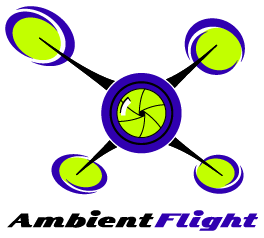

This weekend’s project has been to change my 680mm Alien quadcopter frame to a different one in hopes the different frame is better engineered. I wasn’t very happy with the design of the old frame and the quad flew very poorly in my opinion because of the way the weight was distributed more toward the front and rear of the UAV. The concept of the old one was cool, to get the camera more front, but the mass of the battery had to be put way in the back. This made flying it in anything other than dead calm a teeter totter ride.
The process required ripping the old Alien quad apart and moving all the components/wiring/electronics to the new frame. That took a couple of partial days to do. Much of the wiring was custom cut and soldered, so that had to be undone.
The new version is lighter so far. I’ve decided that though it is cool, I’m not going to put the old retractable landing gear on the new frame. The new frame came with some very cheap, but super light gear. That gear also has some finger nuts which allow it to be take off and put back on very easily. That’s part of the point of this bird, to be able to compact it down to something easy to transport in a backpack or on an airplane etc. I will be weighing both sets of gear to make a note of the difference in grams.
Today’s maiden flight was a success! IT FLIES. Too windy to do much else other than launch it a few feet. It was very squirrely due to being lighter and the wind conditions. The gains are set for a heavier load.
Next Steps
Now that I know it flies, I’ll be taking it into the shop again to install the camera gear. I’ll be putting the old FPV (first person view) camera setup on it, along with a 3-Axis brushless GoPro gimbal. Hopefully by the time I get that stuff installed the wind will have calmed and I can do more test flying later today.
As much as I wanted the Alien 680 H4 I’ve been flying to work out, I’m not happy with it. I’ve gone through quite a bit of work trying to get this frame to fly well but it just doesn’t. I’ve started ripping it apart today and have a new, different 680 Alien folding frame ready to build.
The good part about this frame is the K shape which puts the camera even with the front two motors. That helps keep props out of the photos/video. But because of that design, the battery needs to be put way back to counterbalance it. That means most of the mass is NOT in the center of the bird, where in my opinion it should be. As a result there are some funky things that happen when flying. The bird looks almost like a teeter-totter in wind. When stopping or slowing it is not smooth and I worry about it flipping in the air. I’m thinking the frame and the mass distribution is the issue and surely hoping that it isn’t the MiniX flight controller.
Soon I’ll be sure.
I’m willing to try out a new, more symmetrical frame with the same hardware. That frame has already arrived and I hope to have Alien 2.0 flying soon. Naturally I’ll post a build log.
Perfect For the Beginner or the Experienced Flyer, Typhoon Q500 4K Offers Unmatched Smart Features for a Safe and Easy Flight
ONTARIO, CA (June 30, 2015) — Yuneec International, the world leader in electric aviation, announced the launch of the Typhoon Q500 4K today. The newest member of the Typhoon family produces unparalleled 4K video quality and 12 megapixel still images while delivering Yuneec’s standard of ready, easy and safe flight to consumers everywhere.
The Typhoon Q500 4K is an aerial and ground imaging solution, perfect for both skilled and beginner drone pilots and photographers. It offers up to 25-minutes of flight time while filming with its CGO3 4K camera. The unit comes ready to fly with a standard ST10+ Personal Ground Station featuring a 5.5-inch Android touchscreen display.
“We are very excited to be introducing one of the world’s first 4K camera drones,” said Tian Yu, chief executive officer of Yuneec International. “The Typhoon 4K has elicited the attention of everyone from professional cinematographers to techie geeks to those just discovering drone aviation. No matter the audience, Yuneec produces spectacular images and provides an unparalleled flying experience.”
The 3-axis anti-vibration CGO3 gimbal camera and the optimized fixed focus lens capture smooth videos and crisp images which are stored to an internal memory card and streamed in real time to the ST10+ screen. In addition, all of the controls typically used by professionals are accessible from the ST10+ Personal Ground Station; video resolution and white balance can be adjusted. Additionally, light exposure, ISO and shutter speed can be controlled either automatically or manually making higher quality shots available instantly. The camera features a 115-degree wide-angle distortion-free lens, the ability to shoot slow motion video at 1080p 120 FPS and allows users to take pictures in RAW (DNG) and JPEG format while simultaneously recording video.
The Steady Grip handheld device ensures ground shots are as smooth as those taken from the air. The Steady Grip user is able to capture images, shoot videos and control the CGO3 gimbal camera all from the easily downloadable mobile app, CGO3.
The Typhoon 4K comes with several smart features built into the system, including Geo-fencing, Speed Control, Follow Me and Watch Me. The Q500 4K also maintains the Typhoon family’s focus on safety with features like Dynamic Return Home, Low-Battery Return Home and FAA No Fly. The Typhoon Q500 4K system is available for the suggested retail price of $1299 USD. For more information, check out this video or visit www.yuneec.com.